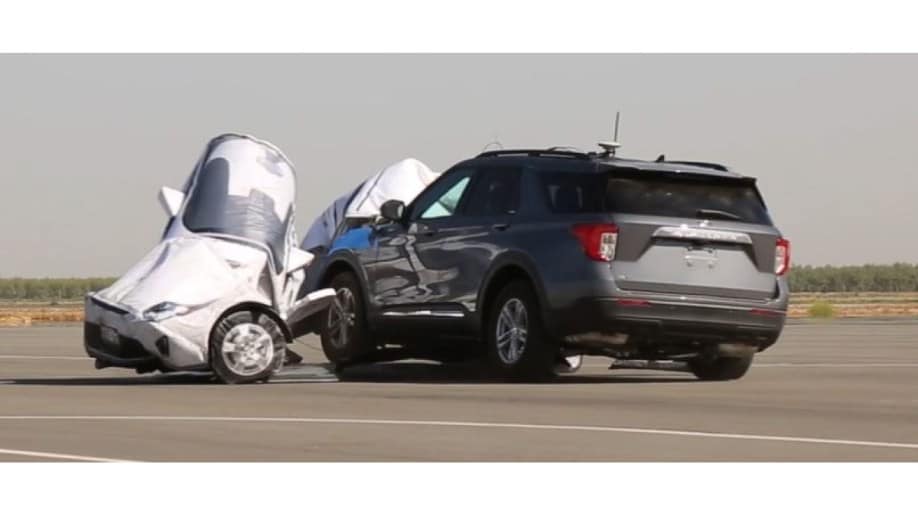
Automatic Emergency Braking Is Now Common
The systems attempt to avoid or minimize crashes by braking a vehicle hard when they detect a person or an object in front of it. They’re not required by law, but they are standard or optional on almost every car sold in America. Nearly every automaker signed a pledge promising to include them by Sept. 1, 2022, and they’ve largely made good on their word.
But the systems don’t work at every speed.
Related: How Does Automatic Emergency Braking Work?
Limited Testing So Far
America has two crash-testing agencies — one run by the federal government and another by a group of car insurance companies.
The federal government’s National Highway Traffic Safety Administration (NHTSA) doesn’t test the systems in every car. It has only performed a few preliminary tests to explore how it might evaluate them. Those tests occurred at 20 mph.
The Insurance Institute for Highway Safety (IIHS) has launched a more robust testing program. It tests AEB systems’ ability to stop a car from 25 mph to avoid hitting an object in the roadway.
Related: Safety Group — Pedestrian Detection Systems Don’t Work Well at Night
AAA: Most Crashes Occur at Higher Speeds
AAA, however, found those tests inadequate.
The agency’s research found that “three crash types are responsible for 79 percent of injuries.” They include rear-end crashes, 90-degree angle “T-bone” crashes, and crashes when a vehicle turns across the path of another car.
Among those crashes, AAA says, “60% occur on roadways with speed limits of 30-45 mph.”
So, AAA sought to re-create them at higher speeds than either NHTSA or the IIHS typically tests.
They used four popular vehicles: a 2022 Chevy Equinox, a 2022 Ford Explorer, a 2022 Honda CR-V, and a 2022 Toyota RAV4.
Mixed Results
The good news? The cars performed quite well in rear-end collision tests. In every case, the vehicles alerted the driver to a possible crash and reduced the car’s speed to make the impact less severe.
They weren’t all equal.
Even at 40 mph, the RAV4 managed to avoid a rear-end crash completely in four out of five tests. Curiously, it only reduced its speed by 7.9 mph on the fifth. The Explorer reduced its speed by an average of 31.8 mph, resulting in minor damage each time.
At the other end of the scale, the Equinox reduced its speed by an average of 17.5 mph — enough to reduce the severity of the crash but never avoid it.
The bad news? In T-bone and turning collisions, none of the test cars warned the driver or activated the brakes.
AAA concluded with separate recommendations for the people who design cars and those of us who drive them.
Automakers, the agency says, “must improve AEB systems to assist drivers in intersection-based crash scenarios” and should make the systems standard on every make and model.
Drivers, meanwhile, shouldn’t trust the car to avoid accidents. Instead, AAA says, we “must recognize an AEB system’s limitations and remain engaged when behind the wheel.”







